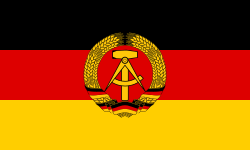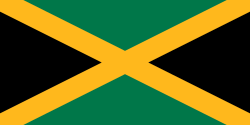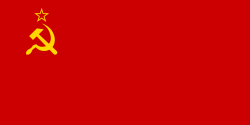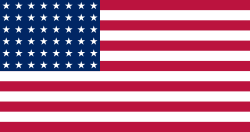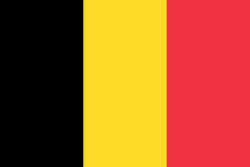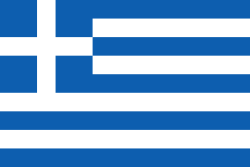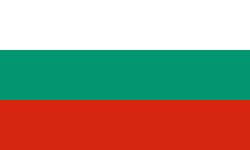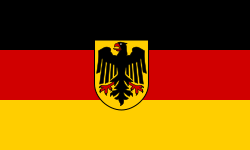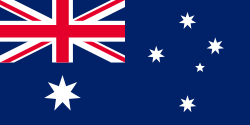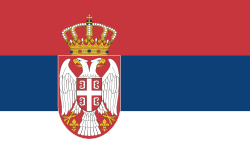Irena Szewińská
| Irena Szewińská | |
|---|---|
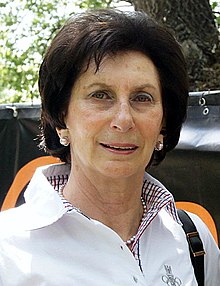 Irena Szewińská (26. května 2012) | |
| Osobní informace | |
| Rodné jméno | Киршенштейн, Ирена a Irena Kirszenstein |
| Narození | 24. května 1946 Petrohrad |
| Úmrtí | 29. června 2018 (ve věku 72 let) Varšava |
| Choť | Sławomir Szewiński (od 1967)[1] |
| Děti | Andrzej Szewiński |
| Kariéra | |
| Disciplína | skok daleký, sprint a štafeta |
| Některá data mohou pocházet z datové položky. | |
| Přehled medailí | ||
|---|---|---|
| stříbro | LOH 1964 | skok daleký |
| stříbro | LOH 1964 | běh na 200 m |
| zlato | LOH 1964 | štafeta 4 × 100 m |
| bronz | LOH 1968 | běh na 100 m |
| zlato | LOH 1968 | běh na 200 m |
| bronz | LOH 1972 | běh na 200 m |
| zlato | LOH 1976 | běh na 400 m |
| Mistrovství Evropy v atletice | ||
| stříbro | ME 1966 | běh na 100 m |
| zlato | ME 1966 | běh na 200 m |
| zlato | ME 1966 | štafeta 4 × 100 m |
| zlato | ME 1966 | skok daleký |
| bronz | ME 1971 | běh na 200 m |
| zlato | ME 1974 | běh na 100 m |
| zlato | ME 1974 | běh na 200 m |
| bronz | ME 1974 | štafeta 4 × 100 m |
| bronz | ME 1978 | běh na 400 m |
| bronz | ME 1978 | štafeta 4 × 400 m |
| Halové mistrovství Evropy | ||
| zlato | EHH 1969 | běh na 50 m |
| zlato | EHH 1969 | skok daleký |
| stříbro | HME 1971 | skok daleký |
| bronz | HME 1974 | běh na 60 m |
| bronz | HME 1975 | běh na 60 m |
Irena Szewińská, rozená Kirszenstein (24. května 1946, Leningrad, Sovětský svaz – 29. června 2018 [2]) byla polská atletka[3], sedminásobná olympijská medailistka.
Vynikala především ve sprintech (běh na 100 m, 200 m a 400 m) ale i ve skoku do dálky. Dvakrát vytvořila světový rekord na stometrové trati [4], čtyřikrát na dvousetmetrové [5] a třikrát posunula hodnotu světového rekordu na hladké čtvrtce [6]. Na světové letní univerziádě v Budapešti v roce 1965 získala dvě zlaté medaile (100 m, 200 m).
Vyznamenání
 důstojník Řádu znovuzrozeného Polska – Polsko
důstojník Řádu znovuzrozeného Polska – Polsko komtur Řádu znovuzrozeného Polska – Polsko, 1972[7]
komtur Řádu znovuzrozeného Polska – Polsko, 1972[7] komtur s hvězdou Řádu znovuzrozeného Polska – Polsko, 1998[8]
komtur s hvězdou Řádu znovuzrozeného Polska – Polsko, 1998[8] velkokříž Řádu znovuzrozeného Polska – Polsko, 2014[9][10]
velkokříž Řádu znovuzrozeného Polska – Polsko, 2014[9][10] Řád bílé orlice – Polsko, 28. dubna 2016[11][12]
Řád bílé orlice – Polsko, 28. dubna 2016[11][12] Řád praporu práce II. třídy – Polsko[13]
Řád praporu práce II. třídy – Polsko[13] zlatý Záslužný kříž – Polsko[14]
zlatý Záslužný kříž – Polsko[14] rytíř Národního řádu lva – Senegal, 2014[15]
rytíř Národního řádu lva – Senegal, 2014[15] důstojník Národního řádu lva – Senegal, 2015[15]
důstojník Národního řádu lva – Senegal, 2015[15] zlaté paprsky na stuze Řádu vycházejícího slunce – Japonsko[16]
zlaté paprsky na stuze Řádu vycházejícího slunce – Japonsko[16]
Odkazy
Reference
V tomto článku byl použit překlad textu z článku Irena Szewińska na polské Wikipedii.
- ↑ Olympedia. 2006.
- ↑ https://sport.idnes.cz/irena-szewi-ska-zemrela-0sc-/atletika.aspx?c=A180630_084414_atletika_tof
- ↑ Szewińska Irena.
- ↑ Vývoj světového rekordu v běhu na 100 m (ženy - dráha). www.athletix.org [online]. [cit. 07-03-2010]. Dostupné v archivu pořízeném dne 19-09-2008.
- ↑ Vývoj světového rekordu v běhu na 200 m (ženy - dráha). www.athletix.org [online]. [cit. 2010-03-07]. Dostupné v archivu pořízeném dne 2008-05-14.
- ↑ Vývoj světového rekordu v běhu na 400 m (ženy - dráha). www.athletix.org [online]. [cit. 2010-03-07]. Dostupné v archivu pořízeném dne 2008-06-12.
- ↑ Nowiny Rzeszowskie : organ KW Polskiej Zjednoczonej Partii Robotniczej. 1972, nr 242-268, 270-271 (wrzesień). [s.l.]: Wydaw. Prasowe RSW „Prasa” Dostupné online.
- ↑ Postanowienie Prezydenta Rzeczypospolitej Polskiej z dnia 22 grudnia 1998 r. o nadaniu orderów.. isap.sejm.gov.pl [online]. [cit. 2020-07-30]. Dostupné online.
- ↑ Postanowienie Prezydenta Rzeczypospolitej Polskiej z dnia 26 marca 2014 r. o nadaniu orderów i odznaczeń. isap.sejm.gov.pl [online]. [cit. 2020-07-30]. Dostupné online.
- ↑ Odznaczenia dla medalistów olimpijskich i trenerów / Ordery i odznaczenia / Aktualności / Archiwum Bronisława Komorowskiego / Oficjalna strona Prezydenta Rzeczypospolitej Polskiej. www.prezydent.pl [online]. [cit. 2020-07-30]. Dostupné v archivu pořízeném z originálu dne 2020-08-06.
- ↑ Postanowienie nr rej. 188/2016 Prezydenta Rzeczypospolitej Polskiej z dnia 28 kwietnia 2016 r. o nadaniu orderów. isap.sejm.gov.pl [online]. [cit. 2020-07-30]. Dostupné online.
- ↑ Oficjalna strona Prezydenta Rzeczypospolitej Polskiej / Aktualności / Ordery i odznaczenia / Sześcioro zasłużonych w służbie państwu i społeczeństwu. web.archive.org [online]. 2016-05-03 [cit. 2020-07-30]. Dostupné v archivu pořízeném z originálu dne 2016-05-03.
- ↑ Who is Who w Polsce. Cz. 2. Wyd. II. Zug: Hübners blaues Who is Who, 2003, s. 4266
- ↑ Kto jest kim w Polsce 1984 : informator biograficzny. 1. vyd. Varšava: Wydawn. Interpress, 1984. 1175 s. ISBN 83-223-2073-6, ISBN 978-83-223-2073-0. OCLC 12807552 S. 342.
- ↑ a b Irena Szewińska - znana i doceniana na całym świecie. dzieje.pl [online]. [cit. 2020-07-30]. Dostupné online. (polsky)
- ↑ Irena Szewińska odebrała Japoński Order Wschodzącego Słońca. sport.onet.pl [online]. 2017-01-31 [cit. 2020-07-30]. Dostupné online.
Externí odkazy
 Obrázky, zvuky či videa k tématu Irena Szewińská na Wikimedia Commons
Obrázky, zvuky či videa k tématu Irena Szewińská na Wikimedia Commons - Irena Szewińská na stránkách Světové atletiky (anglicky)
- Irena Szewińská v databázi Olympedia (anglicky)
- (polsky) Profil na stránkách olimpijski.pl Archivováno 30. 6. 2018 na Wayback Machine.
Média použitá na této stránce
Olympic Rings without "rims" (gaps between the rings), As used, eg. in the logos of the 2008 and 2016 Olympics. The colour scheme applied here was specified in 2023 guidelines.
Olympic Rings without "rims" (gaps between the rings), As used, eg. in the logos of the 2008 and 2016 Olympics. The colour scheme applied here was specified in 2023 guidelines.
Flag of Jamaica. “The sunshine, the land is green, and the people are strong and bold” is the symbolism of the colours of the flag. GOLD represents the natural wealth and beauty of sunlight; GREEN represents hope and agricultural resources; BLACK represents the strength and creativity of the people. The original symbolism, however, was "Hardships there are, but the land is green, and the sun shineth", where BLACK represented the hardships being faced.
The Canadian Red Ensign used between 1921 and 1957.
This image has compared for accuracy (mainly colors) using an image from World Statesmen. The only change is making the maple leaves green from red. This image has compared for accuracy (mainly colors) using an image from World Statesmen. The most recent version of this image has changed the harp into one with a female figure; see [http://flagspot.net/flags/ca-1921.html FOTW
US Flag with 48 stars. In use for 47 years from July 4, 1912, to July 3, 1959.
The civil ensign and flag of Belgium. It is identical to Image:Flag of Belgium.svg except that it has a 2:3 ratio, instead of 13:15.
This is the national flag of Belgium, according to the Official Guide to Belgian Protocol. It has a 13:15 aspect ratio, though it is rarely seen in this ratio.
Its colours are defined as Pantone black, Pantone yellow 115, and Pantone red 032; also given as CMYK 0,0,0,100; 0,8.5,79,0; and 0,94,87,0.Bundesdienstflagge (Flag of the federal authorities of Germany). Under German law, federal states, municipalities, institutions or private persons are not allowed to use this flag.
Flag of Australia, when congruence with this colour chart is required (i.e. when a "less bright" version is needed).
See Flag of Australia.svg for main file information.National flag and merchant ensign of Germany from 1933 to 1935.
National flag and merchant ensign of Germany from 1933 to 1935.
Finská vlajka
Vlajka České republiky. Podoba státní vlajky České republiky je definována zákonem České národní rady č. 3/1993 Sb., o státních symbolech České republiky, přijatým 17. prosince 1992 a který nabyl účinnosti 1. ledna 1993, kdy rozdělením České a Slovenské Federativní republiky vznikla samostatná Česká republika. Vlajka je popsána v § 4 takto: „Státní vlajka České republiky se skládá z horního pruhu bílého a dolního pruhu červeného, mezi něž je vsunut žerďový modrý klín do poloviny délky vlajky. Poměr šířky k její délce je 2 : 3.“
Zelený pruh má znázorňovat většinové katolické obyvatelsto Irska, oranžový pruh reprezentuje protestantskou menšinu a bílý pruh uprostřed znázorňuje mír a harmonii mezi nimi.
Flag of Portugal, created by Columbano Bordalo Pinheiro (1857-1929), officially adopted by Portuguese government in June 30th 1911 (in use since about November 1910).
The flag of the Dominican Republic has a centered white cross that extends to the edges. This emblem is similar to the flag design and shows a bible, a cross of gold and 6 Dominican flags. There are branches of olive and palm around the shield and above on the ribbon is the motto "Dios,Patria!, Libertad" ("God, Country, Freedom") and to amiable freedom. The blue is said to stand for liberty, red for the fire and blood of the independence struggle and the white cross symbolized that God has not forgotten his people. "Republica Dominicana". The Dominican flag was designed by Juan Pablo Duarte, father of the national Independence of Dominican Republic. The first dominican flag was sewn by a young lady named Concepción Bona, who lived across the street of El Baluarte, monument where the patriots gathered to fight for the independence, the night of February 27th, 1844. Concepción Bona was helped by her first cousin María de Jesús Pina.
Autor: Wiki Romi, Licence: CC0
Order of the Lion - Knight (Senegal)
Flag of Second Polish Republic and later People's Republic of Poland in period from March 29, 1928 to March 10, 1980. Red shade used here is HTML "vermilion" #E34234. Proportion 5:8.
Ribbon bar: Order of the Rising Sun (Japan).
Autor: Wiki Romi, Licence: CC0
Order of the Lion - Officer (Senegal)
Ribbon bar: Order of the Banner of Labor (2nd class)




